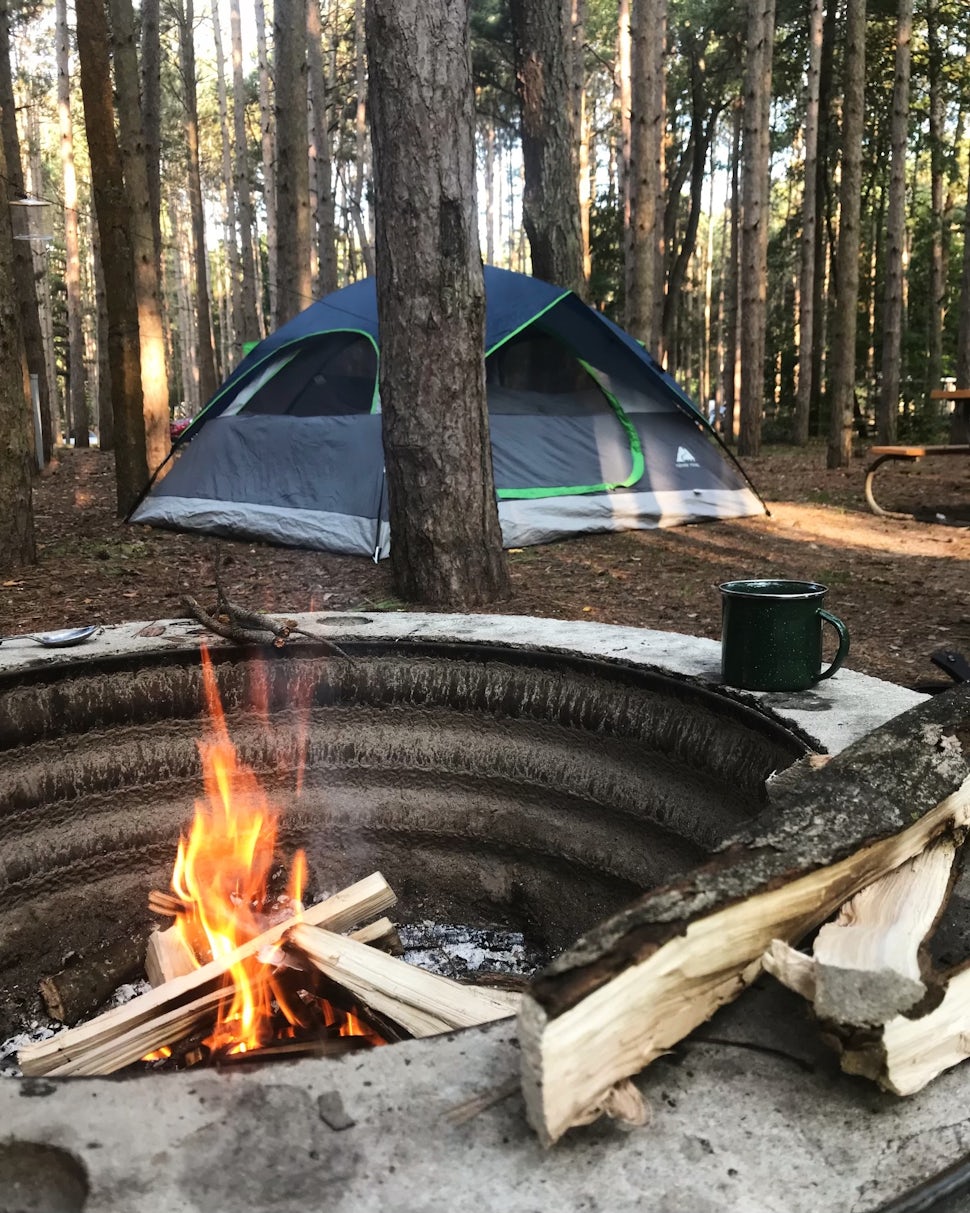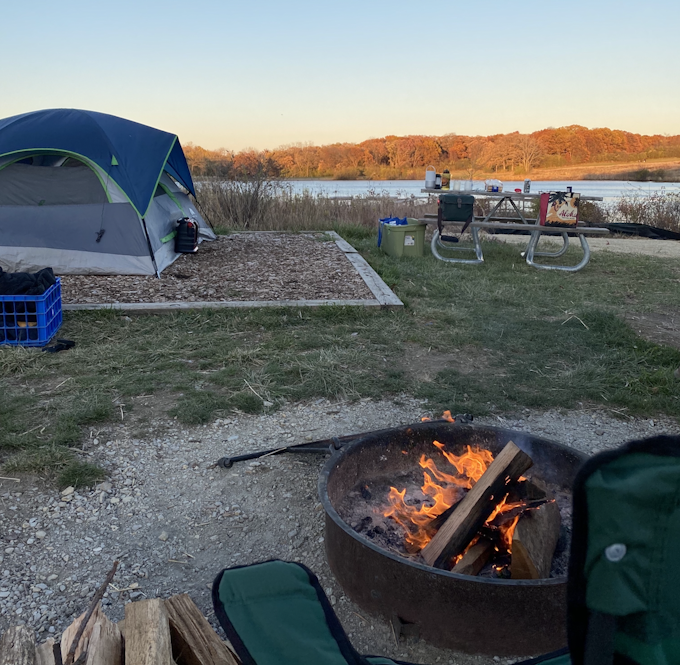How to book a campsite
Want to book a campsite but don’t know where to start? We’ve got you covered.

A warm breeze swaying your hammock between the pine trees.
Sparks flying as you toss another log onto the crackling fire.
The sound of crickets lulling you into a deep sleep.
These simple pleasures are just a few of the reasons I love camping.
However, there’s a bit of work before enjoying the simplicity of life in the outdoors. If you’re new to camping and are in charge of booking a campsite for the first time for your family or group of friends, we’re here to help.
From understanding the different types of campgrounds to knowing which reservation website to use, here’s what you need to know about booking campsites at state parks, national parks, and private campgrounds:
1) Plan ahead
Booking a campsite means booking your trip months in advance (yep, you heard that right: months) in order to snag a spot. That’s because securing a campsite at highly sought-after national and state park campgrounds is more competitive than ever before. With the significant rise of interest in outdoor recreation over the past few years, more and more families, friends, and individuals are booking campgrounds across the country for multi-day outdoor trips.
Most state park websites allow you to book a campground up to six months in advance of your desired camping date. National park reservations differ by state and tend to have a similar advance reservation window. For example, you can book a campsite up to five months in advance at Yosemite National Park and up to six months in advance for Glacier National Park and Yellowstone National Park.
Most campsites, no matter if they’re located in a state or national park campground, can be reserved for a maximum of 14 nights within a 30-day period.

2) Know your campground and campsite type
Campsites at national, state, and county parks, and in the backcountry, differ greatly. Interested in a campsite near or on the water? Want to camp close to the restrooms or a water spigot? Prefer a private site in the woods far from other campers?
Knowing what you want in a campsite and what campground amenities will be available when you get there is an important step in the campsite booking process.
Before jumping online to secure your spot, understand the difference between the common types of campsite amenities based on your campground of choice:
National park, state park, and county park campgrounds
There are over 130 national park campgrounds and 10,000 state parks across the United States. Each is unique with its own amenities, activities, and resources, so it’s important to research the state or national park’s website before booking your stay so know what to expect.
Most state and national park campgrounds have access to drinkable water, flush and/or pit toilets, a fire pit, and a picnic table at the campsite. Some campgrounds also include showers, playgrounds, boat or kayak launches, and on-site electrical hookups (especially helpful for RVs).
Some campgrounds also offer RV-specific sites. These spots are strategically located to allow for easy parking and maneuvering, and also have electricity hookups that pair with a variety of rigs. If you’re rolling up in an RV, make sure to find a campsite that will fit the camper and offers the amenities you want. Not all campgrounds allow RVs or have the necessary electricity hookups, so make sure to check before you book if you’ll be camping in an RV.
First-come, first-serve, or walk-up campsites
National, state park, and county campgrounds around the country may have first come, first serve campsites. These sites are what they sound like – you can’t book these in advance -they’re available on the day of arrival.
Of course, there’s no guarantee you’ll get a spot when you show up to camp. It’s best to arrive early and do your best to beat the crowds. Most popular first-come, first-serve campsites at national park campgrounds (like Mammoth Springs in Yellowstone or Cades Cove in the Great Smoky Mountains) fill up by noon each day.
Similar to a first come, first serve campsite, walk-up campsites cannot be reserved in advance.
Walk-in campsites
Some campsites require a short walk from the parking lot. These sites are denoted as walk-in campsites and can often be booked in advance. Distances for each walk-in site vary, but it can span anywhere from a quarter-mile to a several-mile walk.
Walk-in sites tend to include a firepit, some sort of seating (logs, bench, or picnic table), and a pit toilet. You can typically also find a water spigot at or near the main campground parking lot. Some campsites with walk-up spots feature carts visitors can use to tote their belongings to the site. Check the website or call ahead to ask about these helpful offerings. Other walk-up sites are perfect for backpackers who can carry everything in.
Backcountry campsites
Similar to a walk-in site, backcountry sites have fewer amenities and differ based on where you’re camping. Most (but not all) campsites in the backcountry have a pit toilet near the site or along the hiking trail.
Depending on the state or national park, backcountry campsites may be first-come, first-serve or require a reservation. Most (but not all) state park backcountry campsites are first-come, first-serve. The vast majority of national park campgrounds, especially popular parks like Yellowstone, Glacier, and Yosemite, require a permit to hike in and camp at a backcountry campsite.
Before you arrive at the trailhead where you’ll be backpacking, visit the park’s website to determine whether a reservation is required in advance for the campsites where you plan to stay.
If a reservation is required, reserve online or visit the state or national park’s backcountry permit office to reserve and purchase a permit.
Private campgrounds
Private campgrounds, or those run by an individual or a business unaffiliated with the state, national, and/or county park system, come with a wide range of amenities. Campsites at private campgrounds range from sites with full electric hookup and standard campground loops to fully private walk-in sites. If you’re looking for added perks like swimming pools, wifi, or on-site food and drinks, a private campground might be your best pick.

3) Find your reservation website
Where you book your campsite depends on the state and type of campground where you plan to stay:
State and county park reservations
Most state and county park campground reservations can be booked through the state’s Department of Natural Resources (DNR) website. Each DNR site provides a list of parks that offer camping, a calendar of campsite availability for each campground, and more information about park amenities like hiking and biking trails, water access, and campground facilities.
National park reservations
National park campground reservations can be made at Recreation.gov, which houses reservations for more than 4,200 public facilities and 113,000 individual sites at national parks, national forest areas, and public land across the country.
You can also book timed vehicle entry passes on the Recreation.gov website for national parks’ that require them, including Arches National Park, Rocky Mountain National Park, and Glacier National Park, among others.
Private campground reservations
There are tens of thousands of private campsites and RV campgrounds around the country. Most private campgrounds and campsites can be booked directly via the campground’s website.
Popular private campground discovery websites include ReserveAmerica, Hipcamp, Harvest Hosts, Campspot, KOA, and Tentrr.
We want to acknowledge and thank the past, present, and future generations of all Native Nations and Indigenous Peoples whose ancestral lands we travel, explore, and play on. Always practice Leave No Trace ethics on your adventures and follow local regulations. Please explore responsibly!
Do you love the outdoors?
Yep, us too. That's why we send you the best local adventures, stories, and expert advice, right to your inbox.







